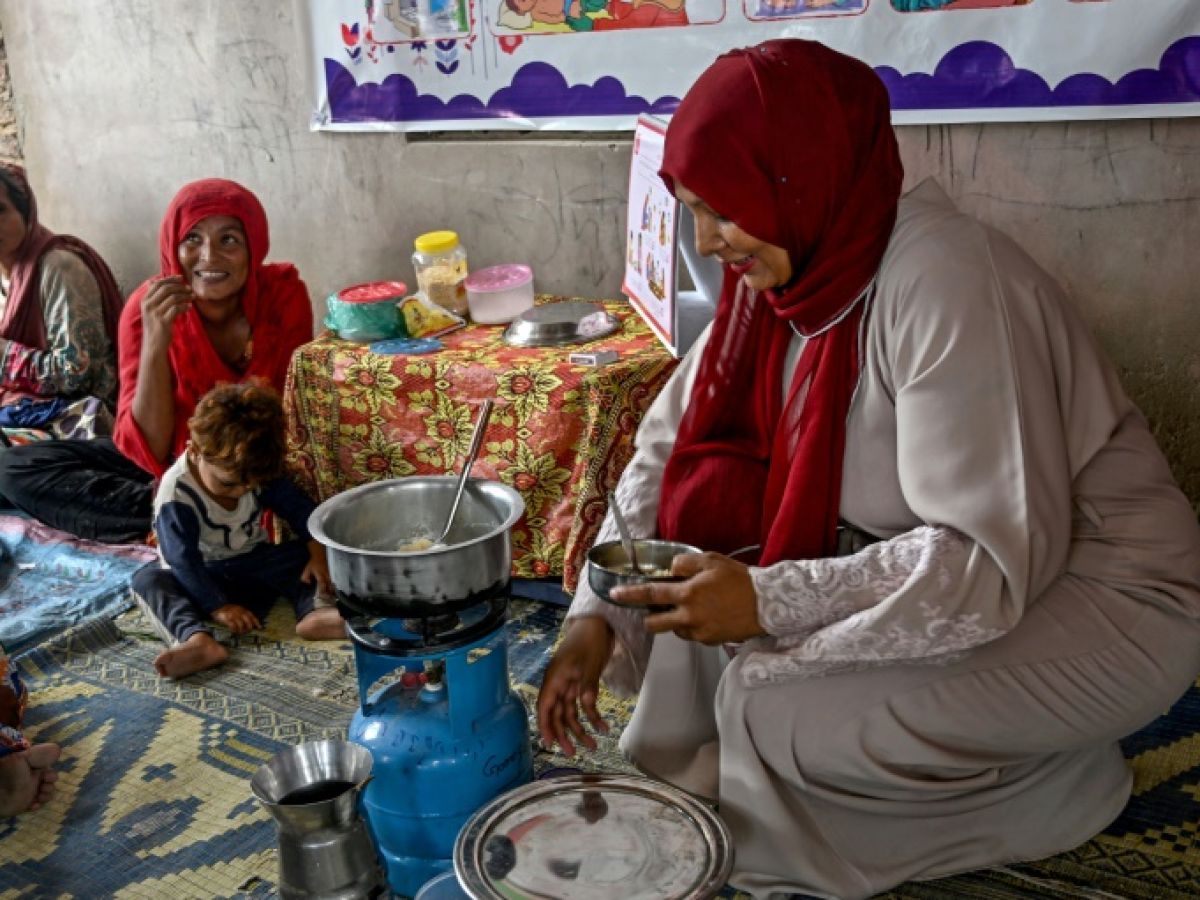In front of mothers clutching their starving babies, Asma cooks her "semolina pudding": with her local and affordable recipes, this Pakistani woman is trying to stop malnutrition, which affects nearly one in two children in the rural South.
Today, this 37-year-old social worker offers two versions: fried semolina for the less well-off or with an egg or milk, easy to find in the village and very nutritious.
"A packet of semolina costs less than 50 rupees (15 euro cents) and if you use one to two tablespoons a day for your recipes, it easily lasts a week," she assures.

Because while Sindh, a coastal province of 55 million people, is home to Karachi, the country's economic heart, just a few hours from the megalopolis, entire villages are hard hit by malnutrition.
In these rural areas, where contraception remains taboo and large families are the norm, 3,500 mothers have benefited from cooking classes designed by UNICEF.
After a year of lessons, Shahnaz, 25, radically changed the diet of her six children.
"Here, I learned to make khichdi," a mixture of lentils and rice, "puddings and semolina cakes," she says, sitting on a colorful mat near the stove. "Whereas before, I only gave my children potatoes because there were always some at home."
"My children's health has improved and I was recently told that my daughter is no longer suffering from malnutrition," she says happily.
Like her, Koulsoum, 23, hopes to save her five children, all born prematurely.
"One of my children died and my youngest is extremely weak, so I was advised to take these classes," says the woman who, like most women in her district, has only one name.

In Sujawal, many mothers say they only give their children, sometimes just a few weeks old, pieces of fried flatbread as meals.
As a result, in Sindh, 48% of children under five suffer from malnutrition and 20% from wasting, its most deadly form, according to the latest national survey conducted in 2018.
More vulnerable to the lack of drinking water and hygiene, they often also have dengue fever or malaria, suffer from vomiting, diarrhea or difficulty urinating and have abnormally swollen stomachs.
– No spices –
In rural Sindh, children often do not eat solid food at six months, and those who do eat it are leftovers from their parents' meals, which are too spicy for babies' stomachs.

Even so, "the main problem is the lack of dietary diversity," says Mazhar Iqbal, a nutritionist for UNICEF.
In Pakistan, 38% of children eat only two or fewer of the eight food categories recommended by UNICEF – eggs, meat, fish, dairy products…
Yet inexpensive alternatives exist: while fish, beef, and turkey remain extremely expensive and are used only for special occasions, chicken offal, boiled bones, or legumes are good sources of protein.

As for the rare fruits and vegetables, if they are fried, as is usually the case, they lose their nutrients.
This is the kind of advice Bakhtawar Kareem came looking for after losing an anemic child.
Like 72% of Sujawal's children, her one-year-old daughter is lethargic, stunted and at risk of cognitive impairment, warns UNICEF.
– “Women eat leftovers” –
But the vicious circle of malnutrition begins with mothers.
"With early marriages and repeated pregnancies, more than 45% of women in Sindh are anemic," says nutritionist Mazhar Iqbal.

"This increases the risk of having low birth weight babies, who are more likely to suffer from malnutrition."
In Sujawal, where only a quarter of the population can read and write, misconceptions also deprive women of vital nutrients.
Farrah Naz has to regularly repeat that, no, eggs or nuts do not make women bleed more during their periods—and therefore should not be banned from them.
Beyond that, adds the head of the Pakistani branch of the Global Alliance for Improved Nutrition (GAIN), "in most families, girls and women cook and serve their loved ones. Only then can they eat the leftovers."
And when food runs out, it's their rations that are cut first, she continues.
And this, "even though women are given the most physical tasks in the fields."

